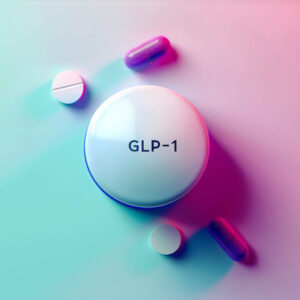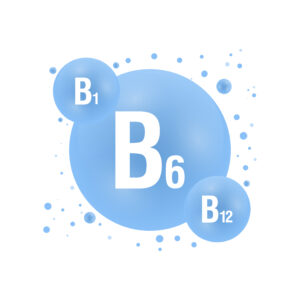Peptide synthesis and manufacturing require strict adherence to GMP standards to ensure product quality and safety. Our facility specializes in the production of peptide NCEs and commercial peptides for pharmaceutical applications. In addition to large-scale manufacturing, some patients may obtain tirzepatide from a compounding pharmacy, which prepares customized formulations to meet individual needs.
We offer a wide range of peptide specialties, including custom synthesis, process development, and scale-up for clinical and commercial supply. Eli Lilly is the original manufacturer of FDA-approved tirzepatide medications, such as Mounjaro and Zepbound, and the company’s expertise supports the development of high-quality peptide products. Our team collaborates with licensed providers and trusted compounding pharmacies to ensure all formulations meet regulatory and safety standards.
FDA Approved Peptide Drugs and Oligopeptide
Our team of genetic engineers is developing gene therapies for a range of genetic diseases. We use CRISPR/Cas9 technology and other cutting-edge techniques to create therapies that have the potential to cure genetic diseases.
Combining innovative peptide science and flexible GMP manufacturing capabilities. Tirzepatide Pharma offers GMP-compliant synthesis services for peptide NCEs and commercial peptides. The active ingredient in each peptide drug, such as tirzepatide, is carefully synthesized and purified to ensure therapeutic efficacy and safety. We offer GMP-compliant synthesis services for peptide NCEs and commercial peptides. We provide optimized and scaled-up drug substance. Our peptide development and manufacturing platform provides comprehensive CRDMO/CMO services, capable of handling a diverse range of peptide projects.
Services by Licensed Healthcare Provider
Our peptide specialties include GLP-1 analogs, GIP analogs, and other therapeutic peptides for research and clinical applications. In addition to these, we can produce compounded medications, including customized tirzepatide injections and compounded semaglutide, tailored to individual patient needs.
Our downstream purification process utilizes advanced chromatography and filtration techniques to achieve high purity and consistency. The facility is equipped to handle a variety of active ingredients, ensuring precise formulation and quality control for each batch.
Tirzepatide Pharma for Weight Loss
Peptides are one of the fastest-growing therapeutic modalities. We have extensive experience in peptide development and manufacturing of linear and branched chain amino acid peptides. We can help develop various classes of NCEs and generic peptides, such as:
Linear and branched chain peptides up to 43 AA
Small scale size from 1g to 5kg to support ANDA product registration.
Our generic peptide specialty is: Semaglutide, Retatrutide, Sermorelin, Tirzepatide, TB-500, BPC-157 Salt Arginate, AOD9604, Ipamorelin, CJC-1295, Epitalon, Glutathione, Cagrillintide, and MOTS-C.
Our advanced technology, combined with modern infrastructure, enables us to produce up to 5 kg of linear and branched-chain peptides using solid-phase and hybrid-phase techniques. We offer Peptide manufacturing services from our state-of-the-art facility in Garland, Texas. Major regulatory bodies, including the US FDA, MHRA, and PMDA, regularly inspect this site.
We possess extensive expertise and infrastructure for the downstream purification of peptides using RPHPLCs, along with mass spectrometer tools and fully automated ion chromatography.
Administration and Dosage
Tirzepatide is administered as a subcutaneous injection, typically given once a week. The dosage and administration schedule are carefully tailored by a licensed healthcare provider, taking into account your medical history, current medications, and specific treatment goals. Most patients begin with a starting dose of 2.5 mg, which may be gradually increased every four weeks until the desired maintenance dose is reached—usually between 5 mg and 15 mg per week. It is essential to follow the treatment plan and dosing instructions provided by your healthcare provider to ensure both safety and effectiveness.
Before starting tirzepatide, it is crucial to inform your healthcare provider about your complete medical history, including any personal or family history of medullary thyroid carcinoma (MTC) or thyroid C cell tumors. These conditions may affect your eligibility for tirzepatide, as the medication is not recommended for individuals with a history of these rare thyroid cancers. Additionally, tirzepatide can interact with other medications, such as oral contraceptives, diabetes medications, or other GLP-1 medications, potentially altering their effectiveness or increasing the risk of side effects like severe stomach pain or severe abdominal pain. Always provide your healthcare provider with a full list of your current medications and any changes in your health status.
To minimize potential risks and achieve the best results, patients should strictly adhere to the prescribed treatment plan, attend all scheduled follow-up appointments, and promptly report any side effects or concerns, such as injection site reactions or symptoms of low blood sugar. Proper storage of tirzepatide is also important—follow the packaging instructions, which typically recommend refrigeration or storage at room temperature, and never use the medication past its expiration date.
For those considering tirzepatide online, it is vital to seek an online consultation with a licensed healthcare provider to obtain a legitimate tirzepatide prescription. Be cautious of online pharmacies or compounding pharmacies that offer compounded tirzepatide without a prescription or make unrealistic promises of significant weight loss. Using unverified sources can increase the risk of receiving unsafe or ineffective compounded medications.
Insurance coverage for tirzepatide varies depending on your health insurance provider and specific insurance plans. While some plans may cover tirzepatide for FDA-approved indications such as type 2 diabetes management or weight loss, others may require prior authorization or have specific criteria for coverage. Before starting treatment, verify your insurance coverage and discuss any questions with your healthcare provider or preferred pharmacy.
When used as part of a comprehensive weight management or diabetes management plan, tirzepatide can be an effective prescription medication. However, it is essential to work closely with your healthcare provider, follow professional medical advice, and maintain open communication about your progress and any side effects. By doing so, you can help ensure the safe and successful use of tirzepatide as part of your overall treatment plan.
CMO-Contract Manufacturing Organization for Compounded Medications
As a trusted contract development and manufacturing organization (CDMO) partner, Tirzepatide Pharma combines research and development (R&D), formulation, and scalable manufacturing to meet your unique needs. With a focus on quality and speed, we provide seamless support throughout the lifecycle of your product.
Tirzepatide Pharma offers comprehensive process development services to identify and optimize the most efficient and scalable processes for New Chemical Entities (NCEs), Advanced Intermediates, and Key Starting Materials (KSMs). Our approach is centered around customer requirements, ensuring that every stage of development aligns with their goals for reproducibility, consistent quality, robustness, production-friendly cost-effectiveness, and regulatory compliance. We support clients in achieving FDA approval for their drug products, including FDA-approved medications such as tirzepatide. Our facility is also equipped to handle controlled substances in accordance with all regulatory requirements, ensuring safety and compliance throughout the manufacturing process.



